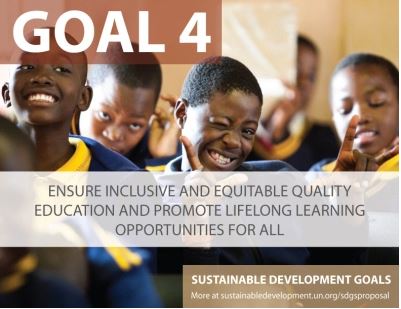Emerging Donor Finance to Technical and Vocational Education and Training By Robert Palmer
By Robert Palmer, NORRAG.
 Anyone that has tried to explore the nature of DAC donor support to technical and vocational education and training (TVET) as captured in the OECD’s Creditor Reporting System (CRS) will understand the challenges of interpreting its multiple codes and multiples uses of the same term ‘training’. However, the even greater challenge is to say something about the scale and character of TVET support from the so-called non-DAC, emerging donors.
Anyone that has tried to explore the nature of DAC donor support to technical and vocational education and training (TVET) as captured in the OECD’s Creditor Reporting System (CRS) will understand the challenges of interpreting its multiple codes and multiples uses of the same term ‘training’. However, the even greater challenge is to say something about the scale and character of TVET support from the so-called non-DAC, emerging donors.
While little public information is available on what emerging donors give to TVET, they support this sector in various ways. Individually, non-DAC countries like Brazil, India, China, Saudi Arabia to name a few have known support to TVET programs in other developing countries.
It will be interesting to see how the newly created US$100 billion New Development Bank BRICS, launched by Brazil, China, India, Russia and South Africa, reports on its disbursements and how much of this might relate to TVET.
Most emerging donors do not participate in existing global reporting systems, such as the OECD’s Creditor Reporting System for the obvious reason that they are not DAC members (though a handful of emerging donors like Estonia, Kuwait and UAE have reported via the OECD CRS system in recent years); nonetheless, the online database aiddata.org tries to aggregate what is known about emerging donor support to development activities, and uses many of the same CRS purpose codes by which to classify non-DAC donor aid to recipient countries. For example, in the aiddata.org database it is possible to pick up some activity from countries like China, Brazil, India and Saudi Arabia:
Brazil and India appear to be the two most significant emerging donors to TVET (aiddata.org):
- Over the three-year period, 2008-2010, India made commitments to 30 vocational training projects. Brazil made commitments of about US$ 19 million to vocational training in 2010, representing a significant increase from 2009 and 2008 commitments of just US$ 100,000 and US$ 600,000 respectively. As expected, some of Brazil’s largest support to vocational training goes to Portuguese speaking countries in Sub-Saharan Africa including Angola, Cabo Verde, Guinea-Bissau, Mozambique, and Sao Tome & Principe; in addition to Portuguese speaking Timor-Leste. In Latin America, the main recipient of Brazilian aid to vocational training in recent years has been Paraguay.
- India has made consistently significant commitments to aid to vocational training over the years 2010, 2009, 2008 – the last three year for which data are available – averaging US$ 7.6 million per annum. During this period, 16 different vocational training projects were committed to.
Saudi Arabia has only three reported commitments to vocational training over the period 2006-2010, to Uganda, Cote d`Ivoire and China, all being concessional loans (aiddata.org).
Meanwhile, Chinese support to vocational training is only partially reported, with significant data gaps, and even where projects are reported the US$ amount of the commitment is not. As an illustration of this, between 2008-2012 only five Chinese projects to vocational training were actually reported (supporting Uganda, Liberia, Rwanda, Mauritius and Ethiopia), with the amount of commitment only reported for two out of these five: a US$ 10 million loan to Liberia in 2011 for a vocational training center and a US$ 11.8 million loan to Rwanda in 2010 for a similar purpose (china.aiddata.org). These projects are clearly only a partial snap-shot of Chinese support to vocational training. It is of course well-known, for example, that there is Chinese support to institutional development abroad as well as to thousands of awardees coming to China for short-term specialist, professional training in a whole series of different sectoral domains. China has also constructed major TVET institutions in countries as different as Pakistan and Yemen.
In the new era of the 2030 Agenda for Sustainable Development, where TVET is included under Sustainable Development Goals 4 and 8, it could be more important for country donors, emerging and DAC, to be able to report on their support. DAC donors certainly need to get their house in order, but non-DAC donors have a much longer road to travel.
Robert Palmer is an education and skills consultant. Email: rpalmer00@gmail.com Tweets @SkillsImpact
>>View all Post-2015 Blogs on NORRAG Blog
NORRAG (Network for International Policies and Cooperation in Education and Training) is an internationally recognised, multi-stakeholder network which has been seeking to inform, challenge and influence international education and training policies and cooperation for almost 30 years. NORRAG has more than 4,500 registered members worldwide and is free to join. Not a member? Join free here.
